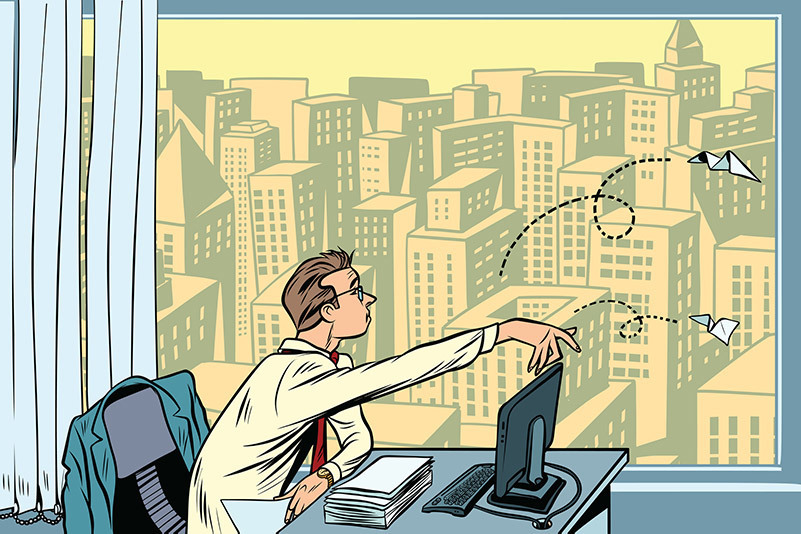Super Drivers
If you asked your employees if they’re proud of their workplace, how would they answer? In the financial industry a shocking 50% respond “no.”
What makes an office building a great place to work? In a branch you can observe workflows, interactions, and employee sentiment in real time, but in your main office, where many more employees are performing a wide variety of collaborative and individual tasks, measuring the employee experience becomes much more complex. But hidden in this quest could be a key to winning the war for talent, recruiting and retaining the best of the best, and keeping employees engaged and productive.
The workplace analysts at Leesman set out to answer that question by surveying over half a million employees at organizations across the world, from small credit unions to big name tech companies, and what they found was surprising. The workplace activities, physical features, and services that had the biggest impacts on employee experience shared three common “super drivers”:
Doing – My workplace supports me in getting my work done.
Seeing – My workplace promotes a positive corporate image.
Feeling – My workplace makes me feel proud of the company culture.
Focusing on features of your home office that incorporate all of these super drivers can create opportunities to maximize employee sentiment and deliver better experiences.
Let’s take a look at a few examples.
Activity: Individual focused work at a desk
For many workers, the majority of their work is performed at their desks. Distractions when performing these focused tasks can make it difficult for them to get their work done, but a workspace that mitigates distractions can help employees not only complete their work, but also come away with a feeling that they are supported by their work environment and the company culture. This intersection of doing, seeing, and feeling means desk-based focus work has an outsized impact on the employee experience, so it’s worth putting in extra time and effort to perfect individual workspace designs.
Physical Feature: Noise levels
Poor acoustic design introduces distraction and stress in a working environment. Imagine an open office at a tech startup: an open room with desk sharing, phone conversations, someone playing Xbox in the corner. This type of environment creates an image of activity that looks interesting in photoshoots, but the excessive noise levels violate each of the super drivers. It’s hard to focus and get work done, visitors and interviewees will perceive this as a stressful place to work, and employees may develop negative feelings about the company culture. This is an extreme example, but every office deals with the struggles of printers beeping, disruptive phone conversations, and other unwelcome sounds. This is another area where you have an opportunity to make a large impact on the employee experience.
Service Feature: Coffee & other refreshment facilities
Offering a nice place to sit down away from their desks and enjoy a complementary refreshment may seem like a small thing, but encouraging employees to take breaks lowers their stress levels and helps them work more productively. It’s also an opportunity for coworkers to talk and get to know each other outside of their regular work activities or department, which promotes a stronger culture and stronger collaborations when team members return to their work. These amenities also appeal to visitors and interviewees as visible demonstrations of your commitment to a good employee experience.
Taking Advantage of These Opportunities
Identifying the areas in your own main office where you can take advantage of these super drivers will give you an opportunity to join the ranks of the world’s highest performing organizations in delivering an experiential workplace. Download our whitepaper "A Study of Credit Union Workplaces and the Future of Work" today to learn more about data-driven workplace strategy!
Momentum partners with Leesman to dive deep into our clients’ teams’ work. We strive to understand the tasks they perform, how they interact with each other, and how well they are supported by their current workplace. This insight helps us establish benchmarks, set performance goals, and guides our designers to develop workplaces that support high-performing teams and the work they do.
If this sounds like something your organization could benefit from, send us a message to start a conversation.

